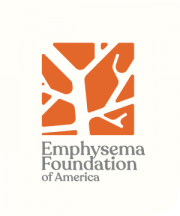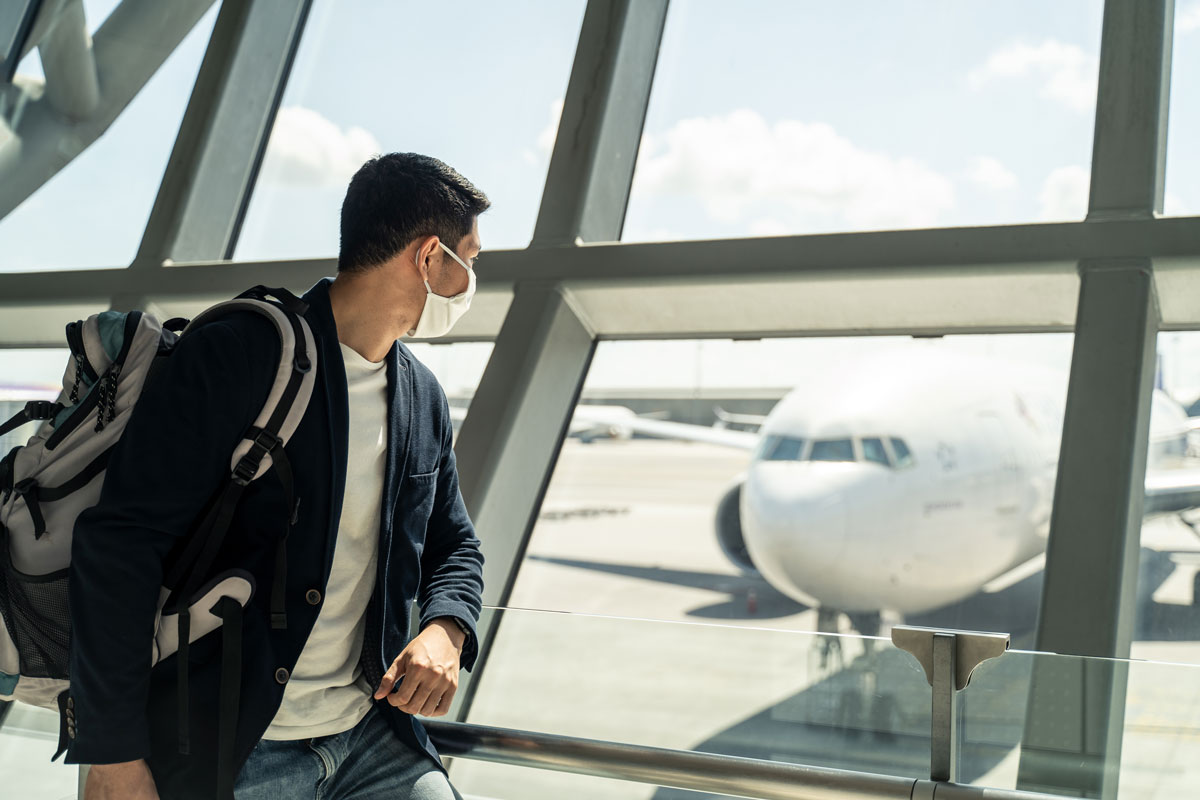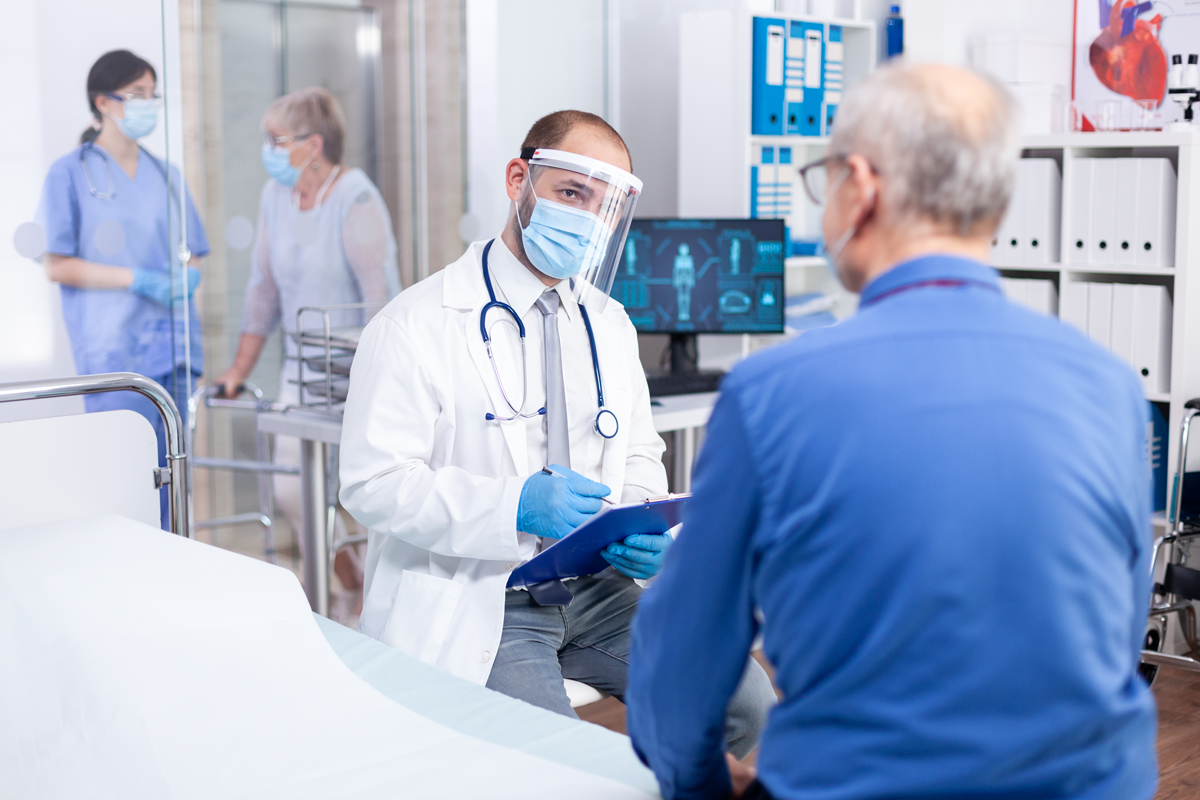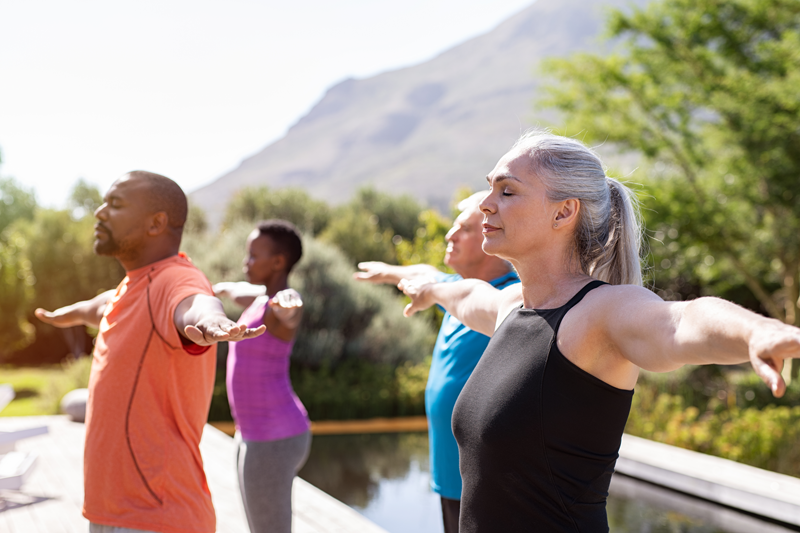The coronavirus pandemic has turned the aviation industry upside down. Government restrictions, safety concerns, and economic hardship have pushed air travel to record lows.
Yet, some people must travel, whether it be for work, permanent relocation, to care for a loved one, or other necessities. If you need to travel by airplane, how can you stay safe?
Many people think air travel is high-risk. After all, sealing hundreds of people into a flying tube seems like a surefire way to transmit diseases. The truth is, the likelihood of you catching the coronavirus mid-flight is relatively low. Modern airplanes are equipped with hospital-grade air filters — known as HEPA filters — that kill airborne viruses. Plus, airplanes constantly recycle air, pumping fresh oxygen into the cabin every few minutes.
This is not to say air travel is risk-free. Any time large groups of people gather in a tight space, there’s a chance of contagion, and merely being in an airport can expose you to the virus. Here are six tips to keep yourself and others safe on your next flight.
1. Get tested before you go.
A foolproof way to ensure you won’t spread the virus to fellow passengers and other people you encounter is to get a COVID-19 test prior to departure. In fact, some countries require travelers to present a negative result before boarding the plane. Even if you don’t need it for your destination, it’s a good idea to get one anyway.
Testing is becoming more accessible, and many insurance providers cover it under their plans. If you decide to get tested, be sure it’s within three to four days before you leave. That way, you’ll have time to get your negative result. Furthermore, limit your exposure to other people while you’re waiting for your results so you don’t risk infecting yourself before your flight.
2. Pack critical items in your carry-on bag
Besides your laptop, phone and a book or magazine, always pack disinfecting wipes, tissues, hand sanitizer, extra masks, and your medications in your carry-on bag. You should also bring gloves to cover your hands in case some things you may need to touch (like the overhead compartments) may not be clean. Make sure you have your medications and accessories close by, such as a rescue inhaler, controller inhaler, a spacer if you use one, and all other medications you take. If you also have allergy-induced asthma, be sure to bring your antihistamine medication as well, and an epi-pen if you your doctor has prescribed it for you. Be sure to carry extra meds in case of a flight delay or cancellation. You should also carry an empty refillable water bottle that you can fill once you pass the security checkpoint, so that you have water if you need to take your meds, and to keep yourself hydrated since the air on a plane can be dry.
3. Prepare ahead of time for low oxygen levels
When flying, the air pressure is low in an airplane, and this decreases the amount of oxygen in the air circulating in the passenger cabin. The reduction in oxygen is usually not noticeable for healthy travelers, but for those with chronic lung disease, even a slight decrease in oxygen can cause noticeable symptoms. While passenger are usually sitting during most of their flight, even slight activity, such as when they have to walk down the aisle to visit the aircraft lavatory, can cause low blood oxygen levels in a significant percentage of people with lung disease.
If you have a disease that can cause low oxygen levels, such as chronic obstructive pulmonary disease (COPD), you may need to use supplemental oxygen on your flight, even if you do not use oxygen at home. Consult your physician several weeks to months before your departure date to determine if you should bring supplemental oxygen with you. Airlines do not provide medical oxygen but allow passengers to bring a battery-powered portable oxygen concentrator (POC) to use during a flight. If you need to bring supplemental oxygen, contact an oxygen supplier to purchase or rent a POC for your flights. Make sure the model has a label indicating it meets Federal Aviation Association (FAA) regulations. The FAA provides a list of approved POCs on their website. Many airlines require you notify them at least 48 hours before your flight that you’ll need in-flight oxygen on your trip, and some also require a letter from your doctor stating that you need oxygen. So, contact your airline ahead of time to understand what they require.
If you bring a POC, pack an extra nasal cannula or mask (whichever you use) and since POCs are battery-operated, pack enough 12-cell batteries for twice the anticipated duration of the flight (eight hours of battery life for a four-hour flight, for instance). Also pack the power cords so you can plug in the POC while waiting at your gate to save your battery life.
4. Wear your mask (and wear it correctly).
In the airport and on the plane — and in all public places — wearing a mask is the single most important safety step. Even though airplanes do have strong air filters, they’re not 100% effective at eliminating viruses. You could also expose yourself to the virus while you check your bags, go through security, or visit one of the terminal restaurants. It’s essential to keep your mask on at all times when possible.
Even more important is wearing your mask correctly. Your mask should cover both your mouth and your nose, and it should fit snugly on your face without forming an airtight seal.
Also, bring extra masks. If you sneeze into your mask, or you are wearing it for many hours in a row, you should change it with a clean one. If you can, wear a face shield in addition to your mask for added protection. If you need to adjust or change your mask or shield, wash your hands before doing so. Again, there’s nothing more effective than mask-wearing to stop the spread of COVID-19.
5. Wash and sanitize your hands frequently.
Researchers have determined that coronavirus spreads primarily through the air and not through contact with contaminated surfaces. That doesn’t make hand washing any less important, though. Frequently washing your hands is good practice on any flight, not just during this pandemic.
There’s still a chance of infecting yourself by touching a dirty tray table or armrest and touching your face. It’s particularly important on an airplane to wash or disinfect your hands before eating and drinking. Hand washing is still essential and effective at preventing the spread of infectious diseases, especially combined with mask-wearing and social distancing.
In addition, you may wish to wear gloves for when you go travel through the airport to get to your gate, go through the security checkpoint, visit a vendor to purchase food, and wait in the gate. This will cut down on how many times you need to sanitize your hands.
6. Sanitize your travel space.
Make sure when you take your seat, that you wipe down your arm rests, tray table, and air vent with a disinfecting wipe before touching them. Turning on the air vent will also blow cleaned air toward your face and torso and blow away dirtier air from you. According to the Journal of the American Medical Association, the risk of contracting COVID-19 from flying on a plane is lower than from an office building, classroom, supermarket, or commuter train. That is because modern airplanes keep the air in the cabin clean by mixing fresh air with air that is recirculated through HEPA filters, the same type of filters used in hospital operating rooms. The circulating system in the cabin pushes air downward to air outlets on the floor so there is little airflow forward or backward between rows.
Done correctly, air travel can be a relatively safe form of transportation during the pandemic. That being said, only travel if it is necessary. It’s not just about keeping yourself safe, but keeping others safe, too.







